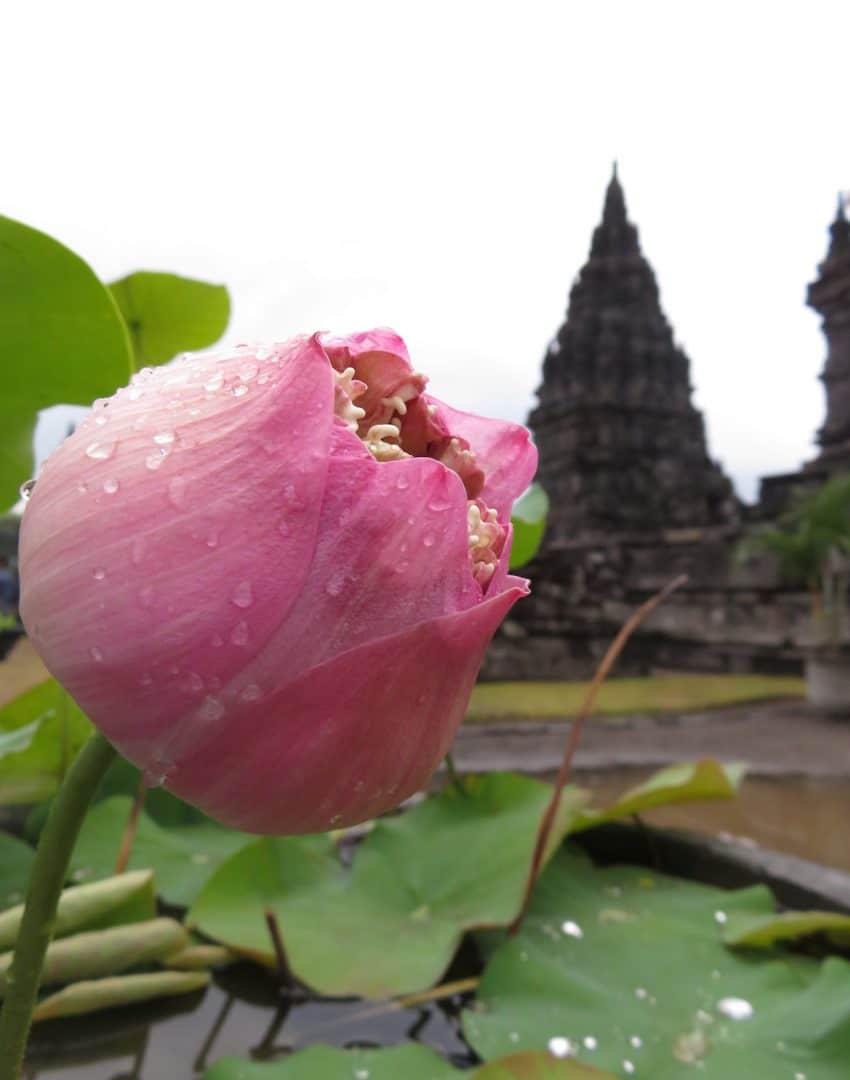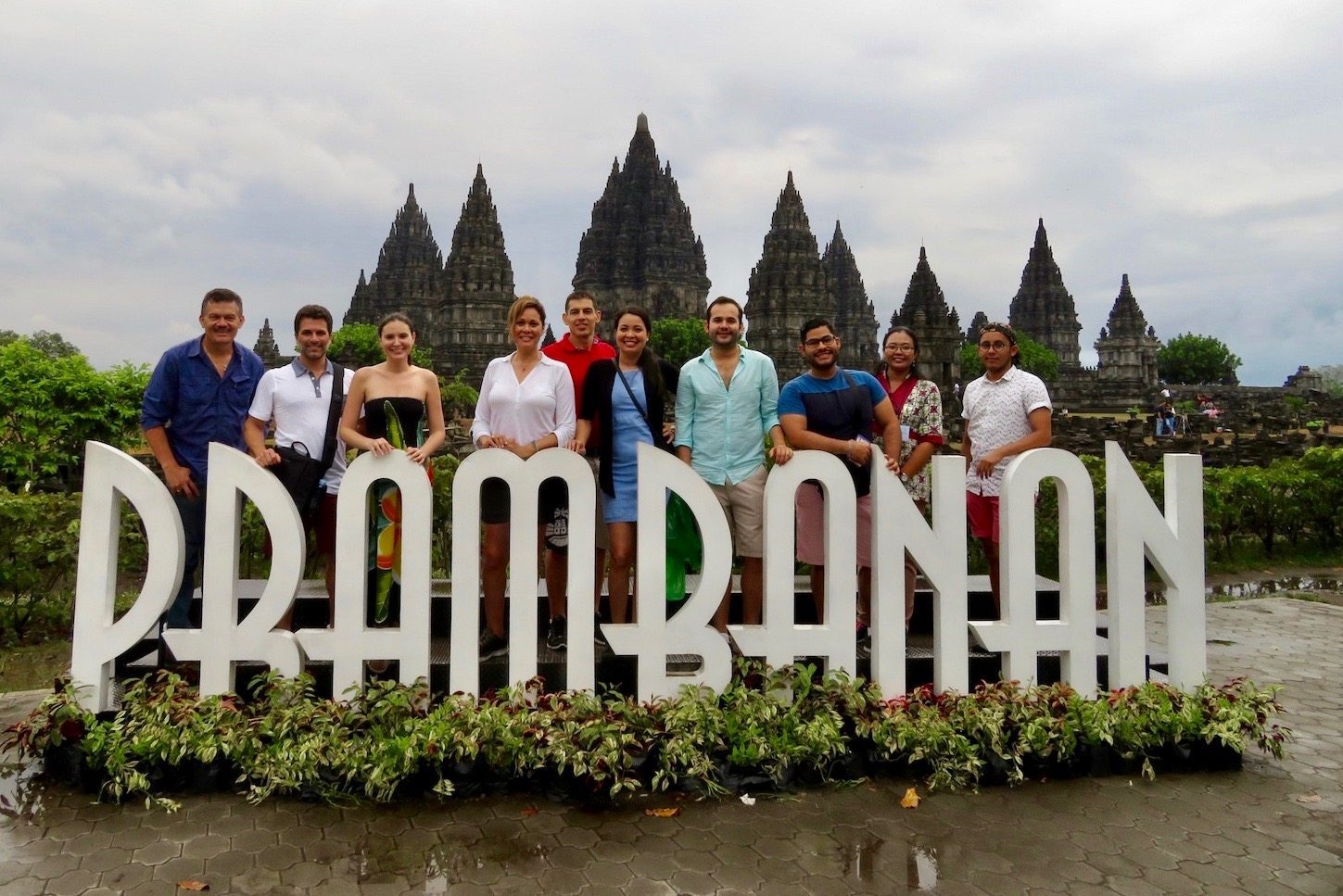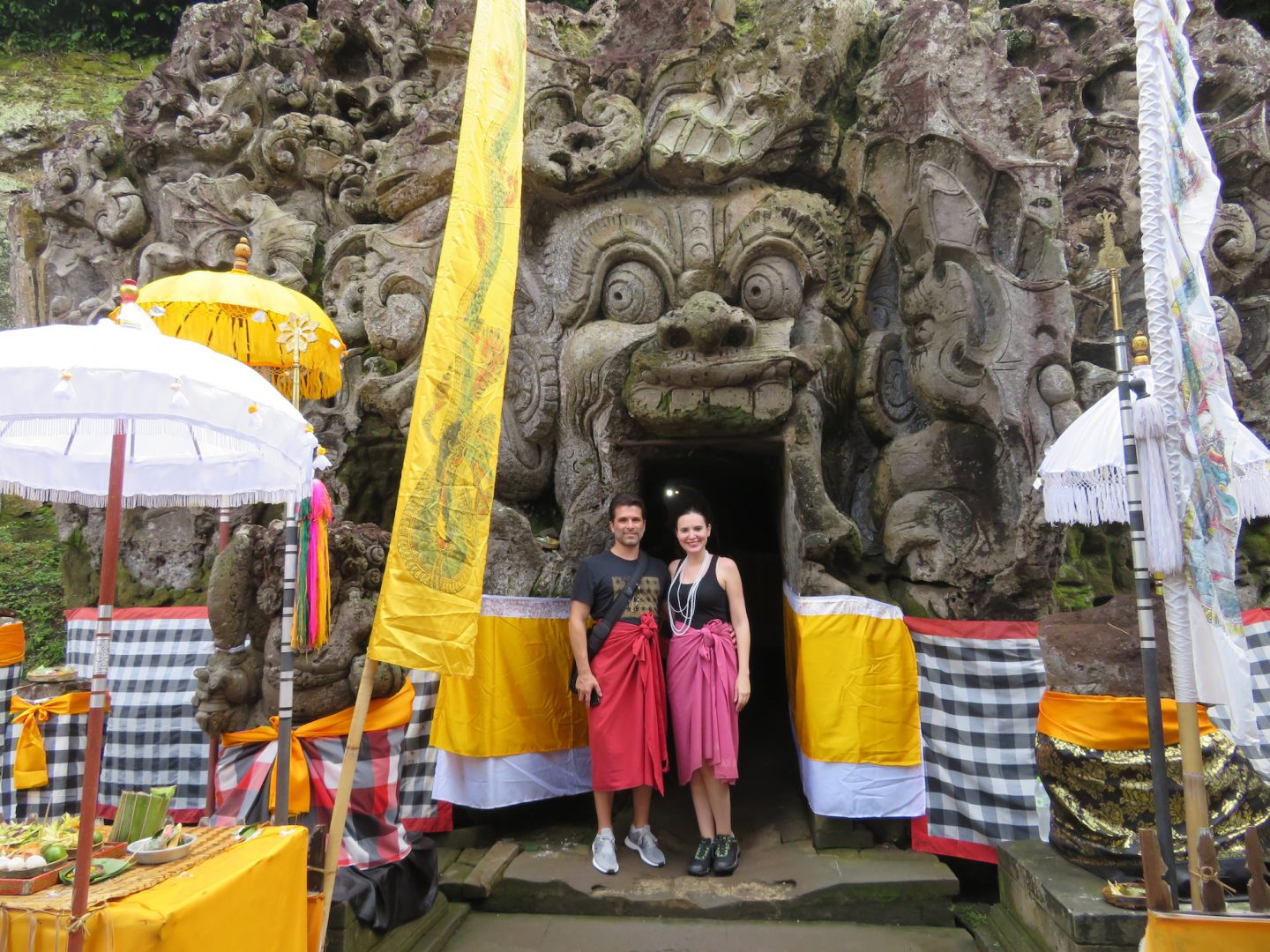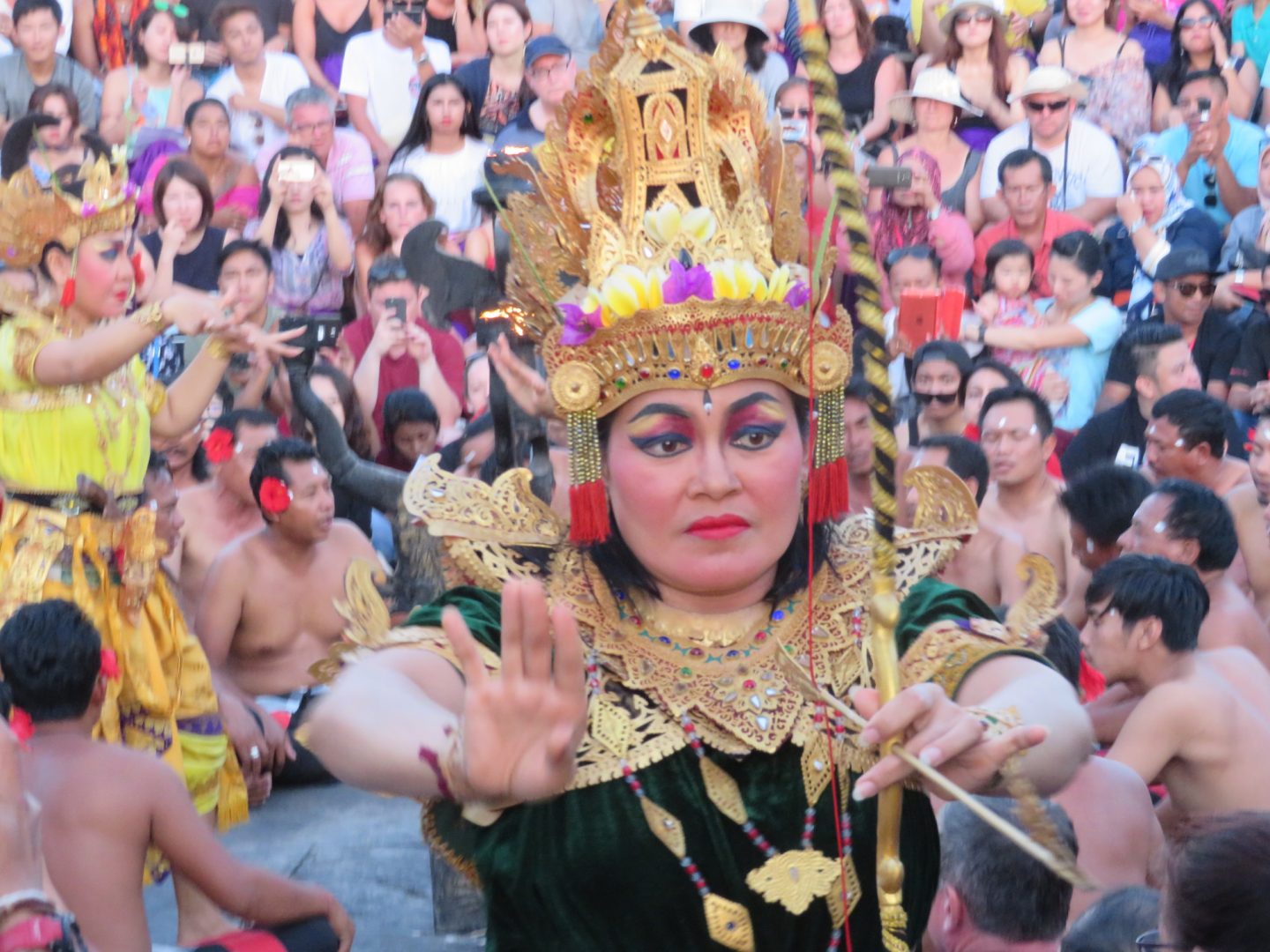Our guide told us that we were going to visit a Hindu temple called Prambanan. The name is a bit complicated, I had to search on Google to see how it was written and then repeat it a couple of times to memorize it.
We went to Prambanan by private transport, which is quite accessible since Indonesia is an economic country. It is possible to go on the Trans Jogja bus from Malioboro or the Giwangan bus station. Yogyakarta is located about 17 kilometers from the temple, you can even take a taxi for a small fee.
Many photo opportunities at the entrance
When we arrived at the site it was raining and the driver gave us colorful plastic hoods to cover us from the rain. However, it was not a heavy rain and fortunately there was not too much mud on the floor. The group met in front of a sign that says “Garuda Mandala” as the complex was built in the form of a mandala with three rectangular walled enclosures.
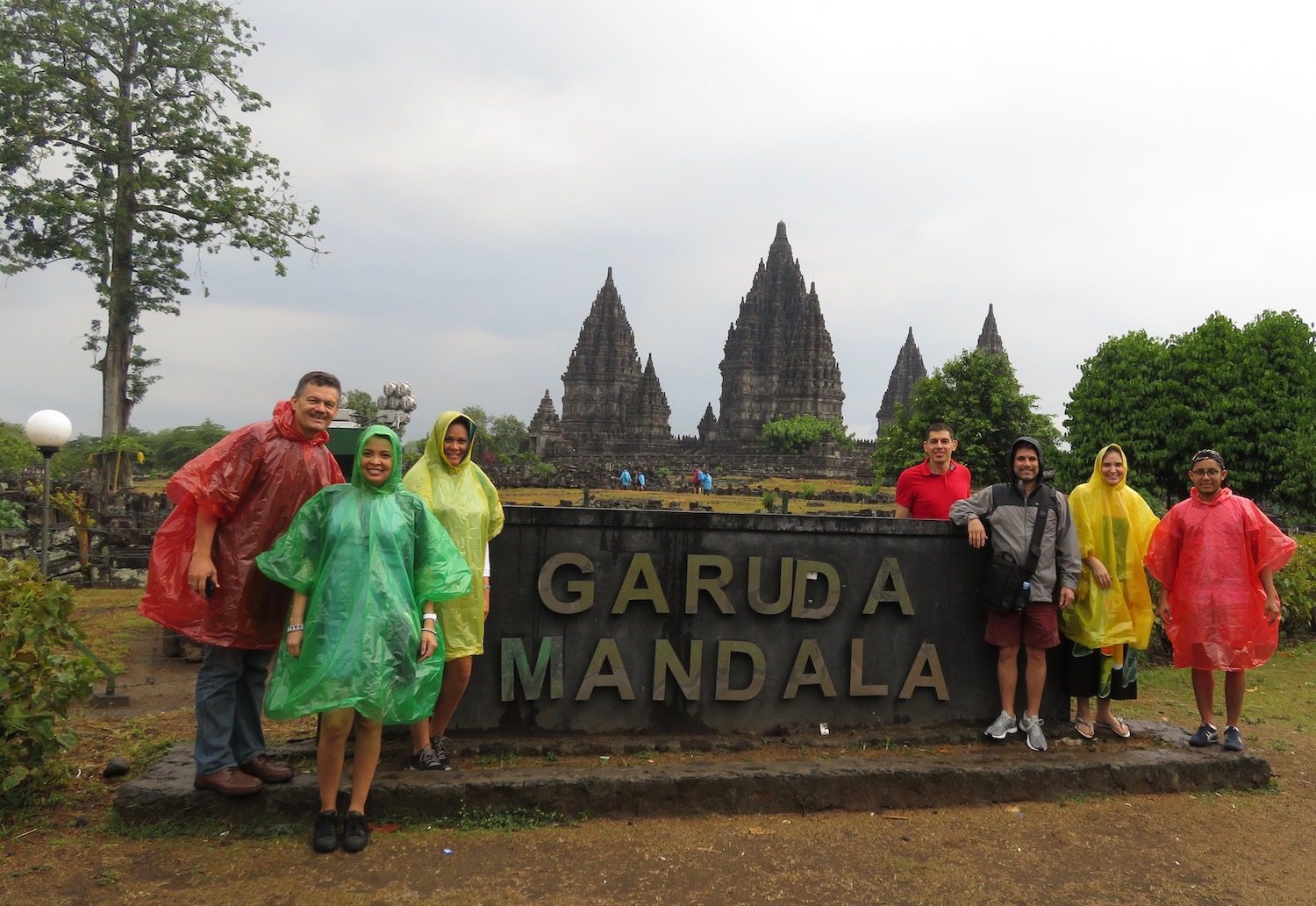
Garuda is a mythical eagle-shaped bird that is considered a lesser God for Hinduism and Buddhism. Indonesia has it as its national symbol. In addition, the country’s main airline is called Garuda Airlines Indonesia.
Another mandatory site to take a picture is behind some letters that say the name of the site. There is even a company on site that dresses tourists in traditional Indonesian costumes to take their picture. There is a heart frame for lovers to take their picture. When I passed there were some guys who told me they wanted to take a picture with me, which is very typical in Indonesia when you’re as white as me. I felt like a movie star, while I was leaving they said “I love you”.
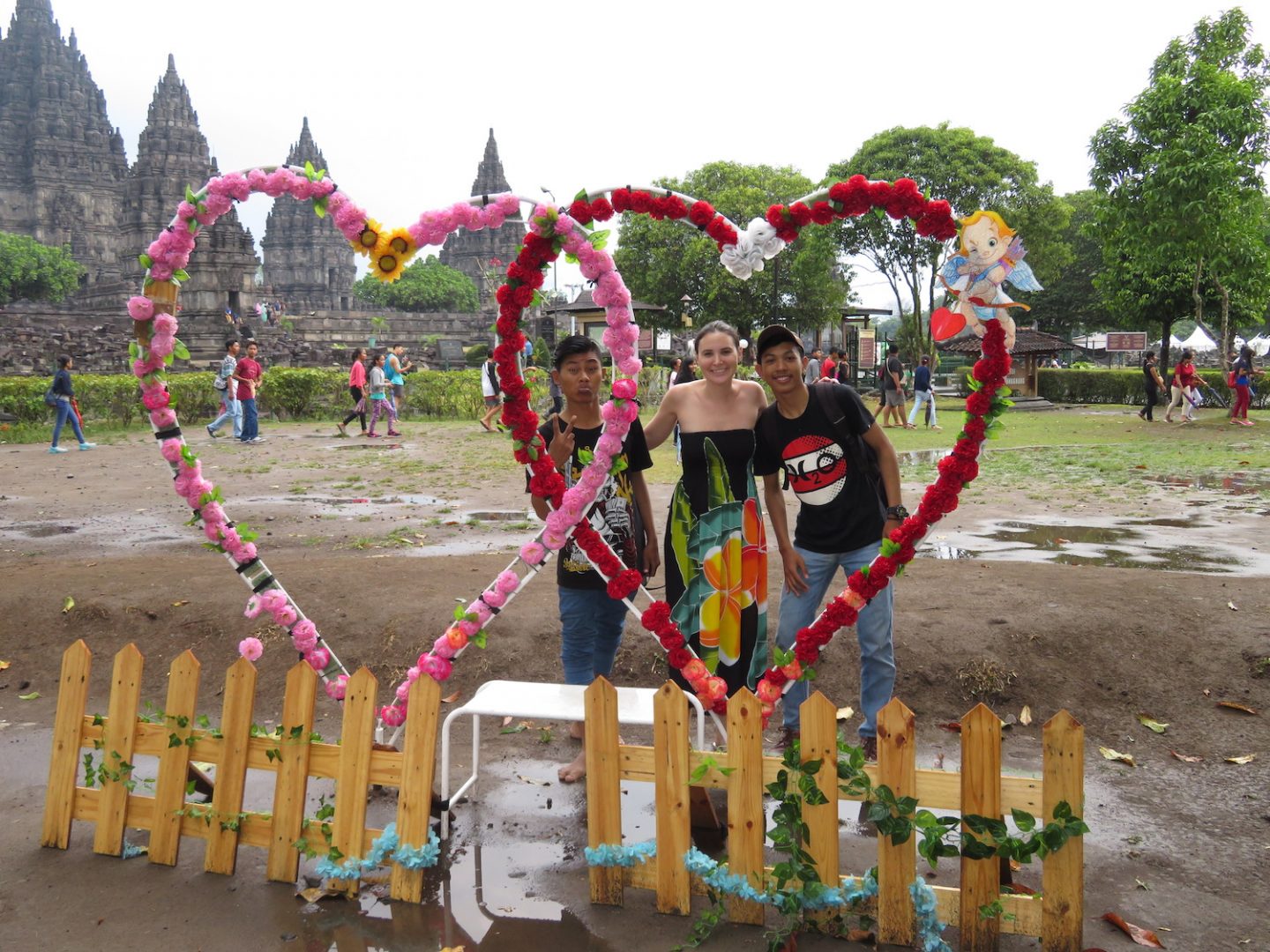
Prambanan is the largest Hindu temple in Indonesia
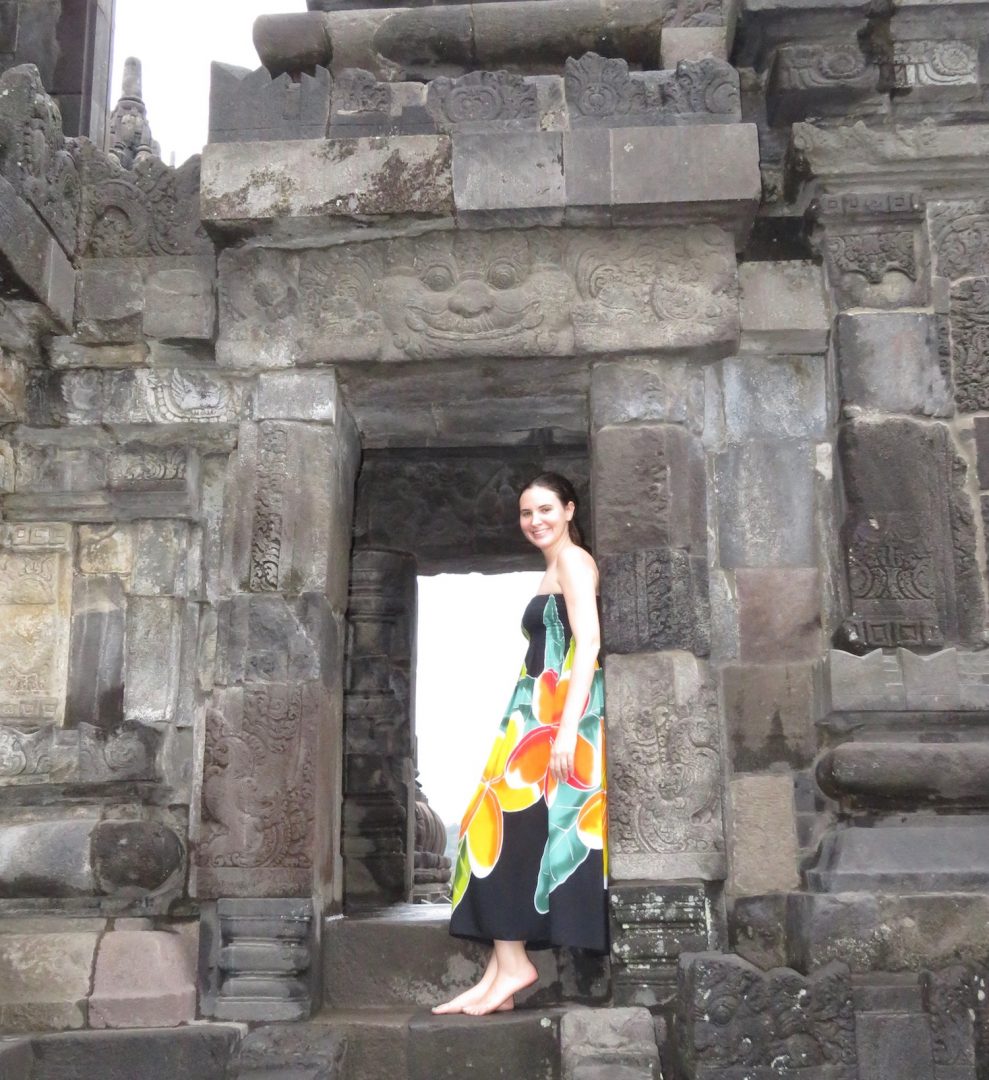
The temple was built in the 9th century and its first mention was in a Syiwagrha inscription dated 856. Prambanan was made in honor of Shiva and its original name was Shiva-grha (the House of Shiva) or Shiva-laya (the Kingdom of Shiva). A curious fact is that during the construction of the temple, the flow of the Opak river was modified since it was very close to the site.
The largest temple was dedicated to Shiva (the destroyer), while the two smaller ones were dedicated to Brahma (the creator) and Wisnhu (the sustainer). The main temple is 47 meters high and has 4 rooms with statues of Shiva, his wife Durga Mahisasuramardhini Dewi, his son Ganesya and that of his professor Agastya inside. The steps to climb the rooms are steep and some rooms had a strong smell of urination.
The 3 temples are carved and feature the epic of Ramayana, an ancient poem that tells the odyssey of the divine prince Rama to rescue his wife Sita from the demon king Ravana. Currently a ballet is performed with typical Javanese dance on a stage on the west side of the temple. We did not see the ballet but if you want to go you should check the dates as they do not do it every day. If you go on your own, arrive early, as tour operators take the best positions. You can also see this Kecak dance in temple of Uluwatu in Bali.
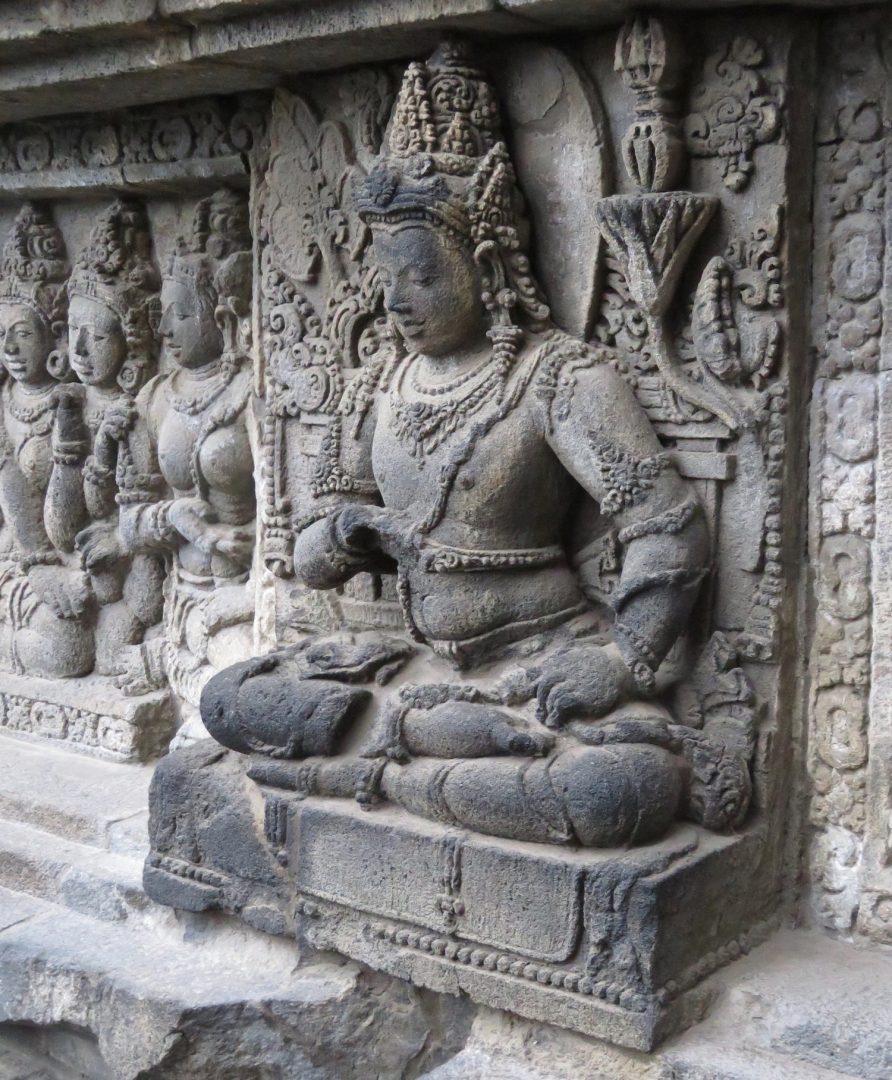
Abandonment and rediscovery by the British and Dutch
In approximately 930s the court was moved to East Java by a power fight or by the eruption of the Mount Merapi volcano. The temple was abandoned and began to deteriorate. In the 16th century it suffered more earthquake damage. Although it stopped being used, it was still a place known to locals. Then it served as a reference to divide the sultanates of Yogyakarta and Surakarta (Solo).
The site was considered cursed by locals who invented tales of giants and a cursed princess. It was said that there lived a multitude of demons.
In 1811 during the British occupation, the Dutchman Colin Mackenzie, found the site by chance. He had been hired by Sir Thomas Stamford Raffles to clear the Borobudur site. It was left unrestored and the Dutch and the natives took the sculptures and stones from the site. Finally in 1930 the formal reconstruction began and the Shiva temple was completed in 1953.
In 1991 Prambanan was designated as a World Heritage Site by UNESCO. The site is considered a cultural wonder with unique architecture.
